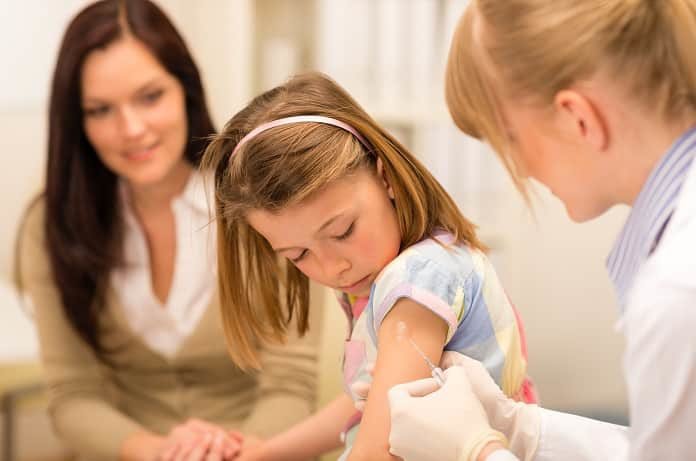Childhood vaccination is a hotly debated topic. A recent article shows how the number of measles cases and healthcare costs can escalate when measles, mumps and rubella (MMR) vaccine coverage decreases.
There is a global decline in the number of children receiving routine childhood vaccinations. In the US, more and more parents seek exemptions on non-medical and personal grounds despite scientific evidence proving vaccine safety and efficacy. There are fears that if current childhood vaccination requirements are relaxed, there will be a further decrease in childhood vaccinations accompanied by an increase in the incidence of many infectious diseases, such as measles. A recent study in JAMA Pediatrics used a theoretical modelling approach to look at the public health and economic consequences of MMR vaccine hesitancy (not vaccinating due to personal beliefs) on childhood measles, a highly infectious viral illness.
Data from the US Centers for Disease Control and Prevention were used to estimate MMR vaccine coverage in children aged 2-11 years in 257 counties in the US. The authors then analyzed scenarios depicting what would happen if measles was introduced into these counties. The effects of increasing levels of vaccine hesitancy, and removing non-medical exemptions were predicted.
MMR vaccine estimates from the current US data show that 93% children aged 2-11 years have been vaccinated against MMR. In 2015-2016, there were 48 measles cases and 4 outbreaks. If MMR vaccine coverage was reduced by 5%, the annual number of measles cases would increase to 150: a 3-fold increase. The number of outbreaks would also increase. This would cost the public sector an additional $2.1 million, based on an estimate of $20 000 per case. When the age range was extended from 2-11 years to 0-11 years to include unvaccinated infants, the number of cases and associated costs increased; and it is expected that these figures would be higher again if adolescents and adults were also considered. In contrast, when non-medical exemptions were eliminated, MMR vaccine coverage was predicted to increase to 95%. This was expected to reduce the annual number of measles cases by 20% (48 down to 38), with corresponding reductions in cost.
Despite some limitations including possible variations in county-specific data, the assumption that each county had a similar mix of children, and the use of a very conservative value for the number of secondary cases caused by a single infectious case, this study shows that measles does pose a real threat to children if vaccination numbers continue to decline. This reinforces the need to address the ongoing debate regarding vaccine hesitancy at both the state and national level, and that particular consideration should be given to removing nonmedical exemptions.
Written by Natasha Tetlow, PhD
Lo NC, Hotez PJ. Public health and economic consequences of vaccine hesitancy for measles in the United States. JAMA Pediatrics. 2017. Available at: doi: 10.1001/jamapediatrics.2017.1695



